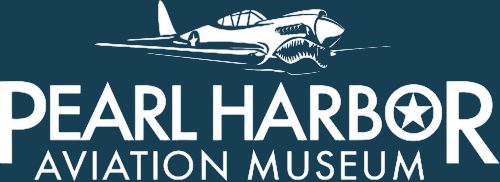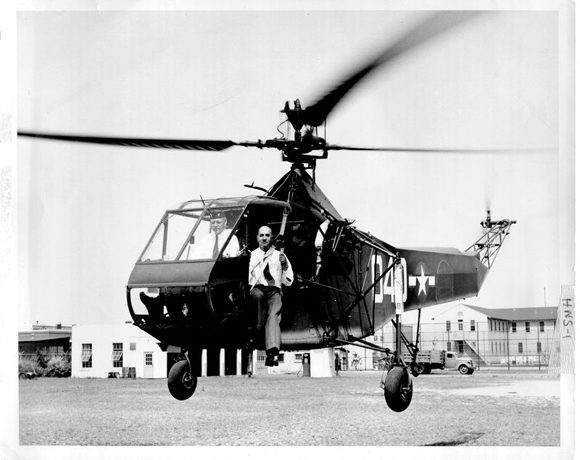Posted on May 31, 2012

Ford Island Control Tower, Pearl Harbor
From the Ford Island control tower, LT Erickson watched in horror as men drowned in the harbor. Boats tried to rescue the sailors, but they could not get through the flames. The frustrated Erickson remembered an article about new kind of aircraft called the helicopter. Helicopters could hover over a position, making them perfect for flying to swimming sailors and hosting them to safety. LT Frank A. Erickson spent the rest of his career in the United State Coast Guard making his dream of rescue helicopters real. He was, in many ways, the father of Coast Guard helicopter rescue.
LT Frank A. Erickson was the early morning duty officer for Naval Air Station Pearl Harbor. From his post in the Administration Building on Ford Island, LT Erickson watched the morning flag- team prepare to hoist the colors. Following that, he would be relieved. Suddenly, bombs began to fall near the southern end of the base. As LT Erickson turned toward the shipyard, he could see torpedo bombers attacking the USS California, which was moored near the Administration Building. The phone rang immediately and the agitated NAS commander, CAPT James M. Shoemaker, asked, “What the hell kind of drills are you pulling down there?” LT Erikson convinced the captain it was a real attack. A few minutes later, CAPT Shoemaker drove from his home on the island and took charge.
LT Erickson was on the crew of the USCG Taney. He flew the ship’s J2F Duck seaplane. However, the Taney was far away, in Honolulu Harbor. He would not be able to reach it during the attack. Instead, LT Erickson was told to go to the landplane control tower, Building S-84, and take command. Running through bomb shrapnel, made it to the tower and began to operate it. Enterprise CAG “Brig” Young went to the control tower after landing his SBD Dauntless that had been damaged by friendly fire. Young later wrote, there was only a single officer on duty, and he was a Coast Guard officer. LT Erickson had a very small command.
Five months later, LCDR Erickson was posted to Floyd Bennett Field in New York. He was quickly sent to the Sikorsky Aircraft plant in Bridgeport, Connecticut, where he was to learn to fly helicopters and act as liaison between Sikorsky and the Coast Guard. (His training made him Coast Guard Helicopter Pilot No 1.) While at Sikorsky, he wrote a series of influential reports arguing that helicopters would be useful for many activities, including convoy support, police operation, and, of course, rescue. In 1943, CDR Erikson became executive officer of the Coast Guard Air Station at Floyd Bennett Field. He later became commanding officer for a year before being released to work on research full time. He continued to work on helicopter issues for the remainder of his Coast Guard career. In the picture that follows, he is flying with a passenger—Igor Sikorsky.

In 1942, when he was at Sikorsky, German U-Boats were sinking large numbers of merchant ships, particularly in the gap in the middle of the ocean route, where land-based aircraft could not provide cover. Erickson pushed the idea of operating helicopters from merchant ships to go on patrols and even drop depth charges. Operational tests quickly demonstrated that the idea was feasible. Helicopters perform exactly that service for the Navy today, although operating from Navy ships instead of merchants. However, by late 1942, the need for helicopters to do anti-submarine missions became a low priority because escort carriers with significant air groups were becoming available.
This gave Erickson a chance to develop rescue concepts. He demonstrated that helicopters could pick people up with slings, although the power of current helicopters limited the rescue weight to 130 pounds. In the figure that follows, Erickson is at the controls. The person being “rescued” is Igor Sikorsky.

Erickson believed that helicopters could perform rescues in almost any weather. He personally demonstrated this in 1943, when the USS Turner exploded near Sandy Hook, New Jersey. Blood plasma was desperately needed, but weather conditions had grounded all flights. Asked if he could deliver the plasma by helicopters, Erickson gave a big smile and said, “Yes, Sir!” Despite challenging conditions, including the need to leave the plasma pickup site backwards under zero-visibility conditions, Erikson succeeded in delivering two cases of badly-needed plasma. This was the first helicopter rescue mission in history.
Although the potential for rescue helicopters was now well established, funding was thin. Ironically, it was an application that had not been anticipated that kept the helicopter group in operation during the war. Ships in port needed to calibrate their gun control radar systems. Helicopters, with their ability to fly in the confined space of the harbor and hover if necessary, were ideal for the task. Erickson and other helicopter pilots that he had trained flew many radar sighting missions, keeping demand high for the helicopter group.
Frank A. Erickson, Pearl Harbor
Frank A. Erickson spent most of his remaining Coast Guard career working on helicopters. He retired as a captain. Today, we think nothing of helicopters saving people at sea under the most challenging conditions. Yet the idea was born when a young Coast Guard Lieutenant watched in horror from the land plane control tower (Building S-84) as men died in the water around Pearl Harbor on December 7, 1941.

References
Beard, Barrett Thomas, Wonderful Flying Machines: A History of U.S. Coast Guard Helicopters, Naval Institute Press, 1996.
LT Connie Braesch, “Coast Guard History Day—Honoring Captain Frank A. Erickson, July 1, 2009.
Lt. Frank Erickson, Report on his Experience in Pearl harbor, December 7, 1941. http://www.uscg.mil/history/docs/PH_Erickson_Report.asp
United States Coast Guard, “Captain Frank A. Erickson, USCG” http://www.uscg.mil/history/people/EricksonFrankBio.asp.


